


STARTS HILL ESTATE AND BASSETTS
Starts Hill is a road of about two thirds of a mile in length that runs between Farnborough and Locksbottom. The northern end passes between the rear of the Princess Royal University Hospital, formerly the Farnborough Workhouse, and Tugmutton Common which has a long association with Gypsy or Traveller families. This was the scene for a mass eviction of travellers from the common carried out in 1887 at the behest of local gentry, in order to enclose it.
The southern end remained mostly undeveloped until just before the second world war, apart from the village school, established in the 1870s to replace the earlier school in Farnborough Village, and Starts Hill Farm. This map dates from 1908.
Click on maps and images to enlarge

Shortly after this map was published, Bassets House was built, by the Lubbock family. See panel to the right.
House building started with what is now Starts Hill Avenue in the 1920s., but the more extensive developments on the western side commenced just before the second world war. This proved to be a precursor to further building that took place after the war between Farnborough and Orpington.
Mowbray Investments Prospectus
A publication entitled Starts Hill
Estate was published in 1939 by an organisation called Mowbray
Investments, to promote the development. A company of this name is
still active in investments today, although as it was incorporated only in
2010 it is unlikely to have any direct relationship with the earlier
one.
This map is taken from their prospectus and shows the general location of the proposed development; however the map is not particularly accurate.
The full prospectus can be Read Here
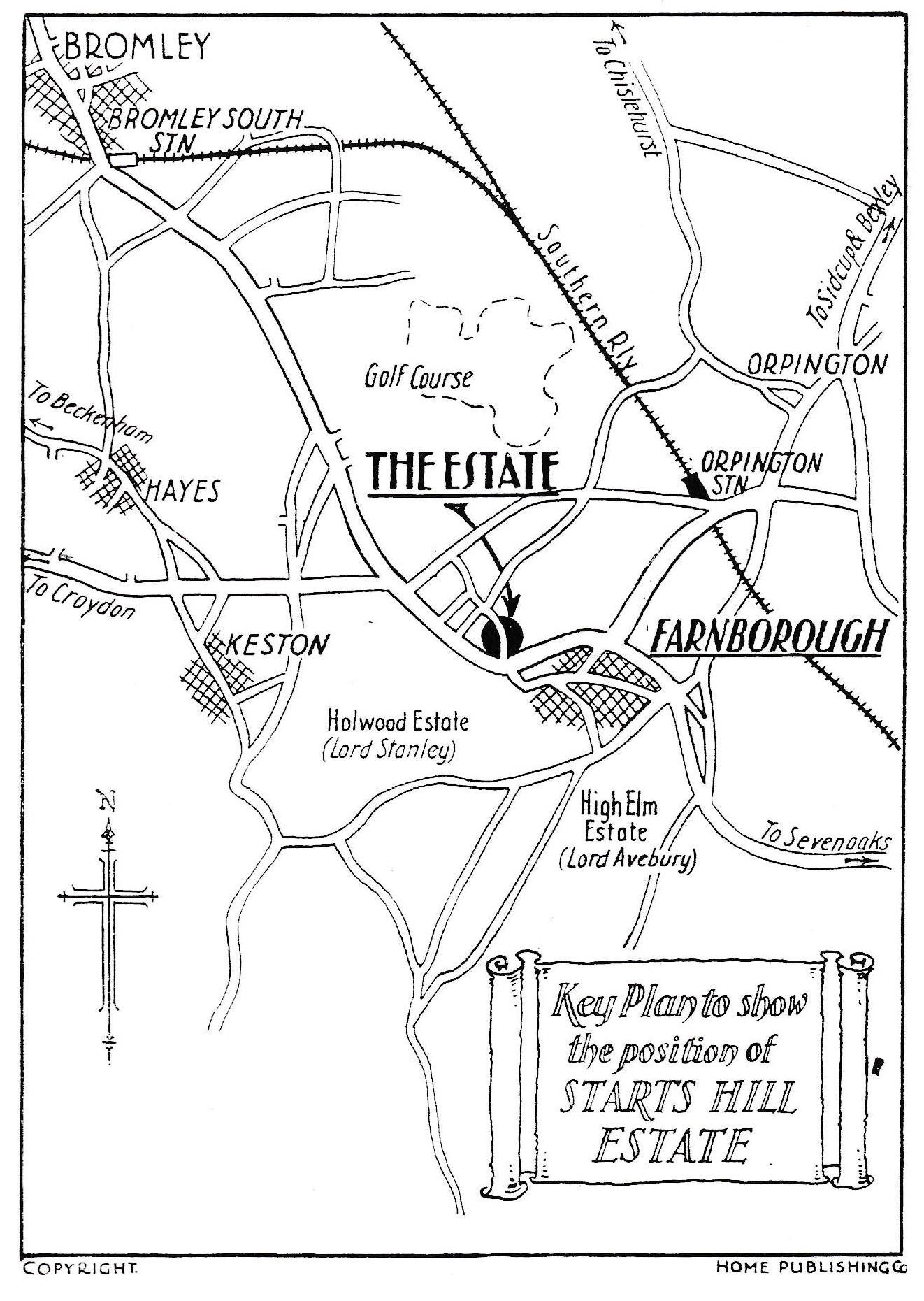
The development was to comprise housing on the western side of Starts Hill itself, plus a new road to be called Bassetts Way, with a small close Bassetts Close added at the southern end. The name Bassetts reflects the house of the same name already present on the other side of Starts Hill.
Four house types were offered, all semi-detached, but of varying sizes. Prices ranged from £585 to £750,with terms also available from £15s 8d to £20s 2d. per week.
The depictions of what were presumably judged to be contemporary furniture differ markedly from what we might expect today!
Features common to all house types included a garden with a frontage of 25-27ft, and a depth of at least 100ft, which was claimed to be 'exceptional' for a house of this price; well drained soil being a mixture of sand and gravel; and walls of solid bricks, which is assumed to mean without cavities. Garages were not included, although there was claimed to be space to add one if required. The prospectus attached gives details of fitments to be included in kitchens, and bathrooms. All gardens were to be fenced.
The prospectus stresses the local shops available in Farnborough, no doubt more comprehensive than those remaining today, as well as in Orpington, one and a half miles away. Places of worship available in Farnborough are listed, together with transport facilities which included direct links to London via bus route 47 (then going to Shoreditch) and Green Line coach route C to Victoria and Kingston.
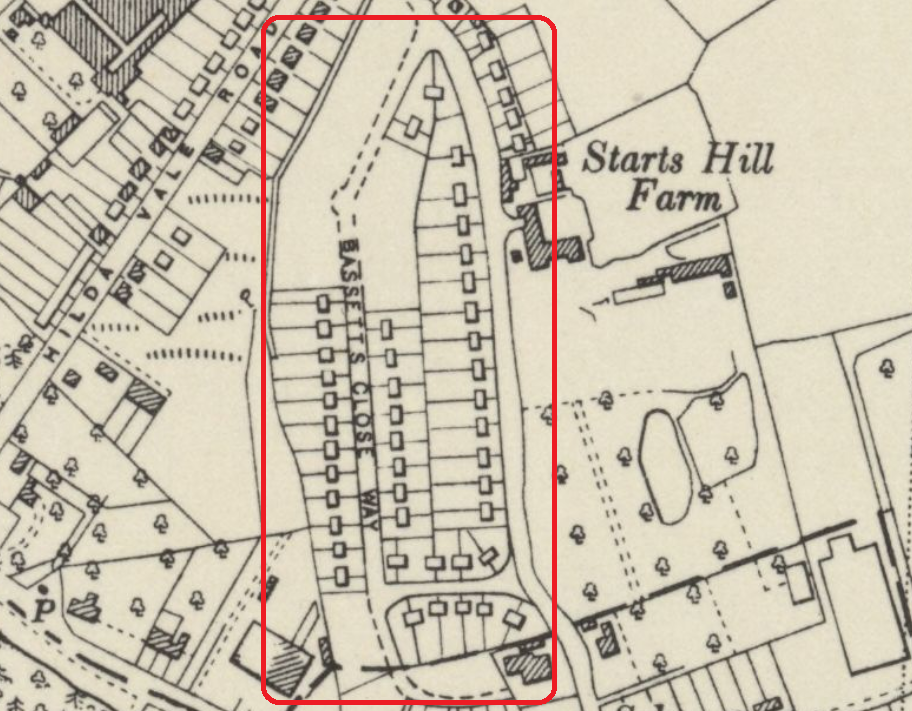
Above is an ordnance survey map of the development dated 1938, showing the estate partly mapped out. Click on the image for a google map view of the same location.
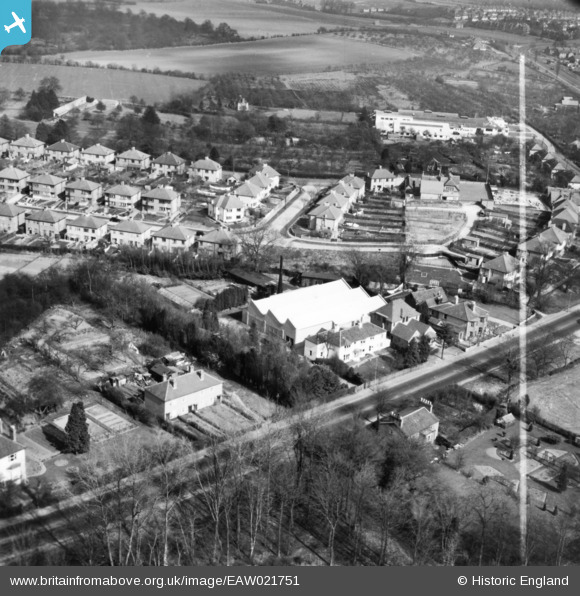
This aerial photo shows the estate looking from the west. The A21 is in the foreground with Bassetts Way running left to right through the newly built houses. The engineering works (now long gone) is in the background.
This map is taken from their prospectus and shows the general location of the proposed development; however the map is not particularly accurate.
The full prospectus can be Read Here

The development was to comprise housing on the western side of Starts Hill itself, plus a new road to be called Bassetts Way, with a small close Bassetts Close added at the southern end. The name Bassetts reflects the house of the same name already present on the other side of Starts Hill.
Four house types were offered, all semi-detached, but of varying sizes. Prices ranged from £585 to £750,with terms also available from £15s 8d to £20s 2d. per week.
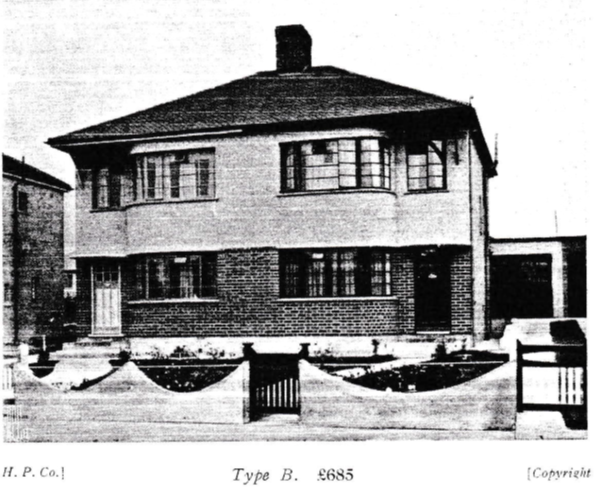 |
|
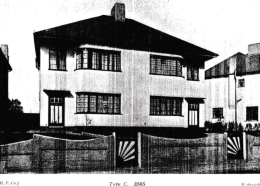 |
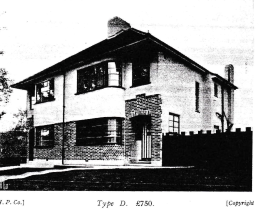 |
| Type 'C' House | Type 'D' House |
The depictions of what were presumably judged to be contemporary furniture differ markedly from what we might expect today!
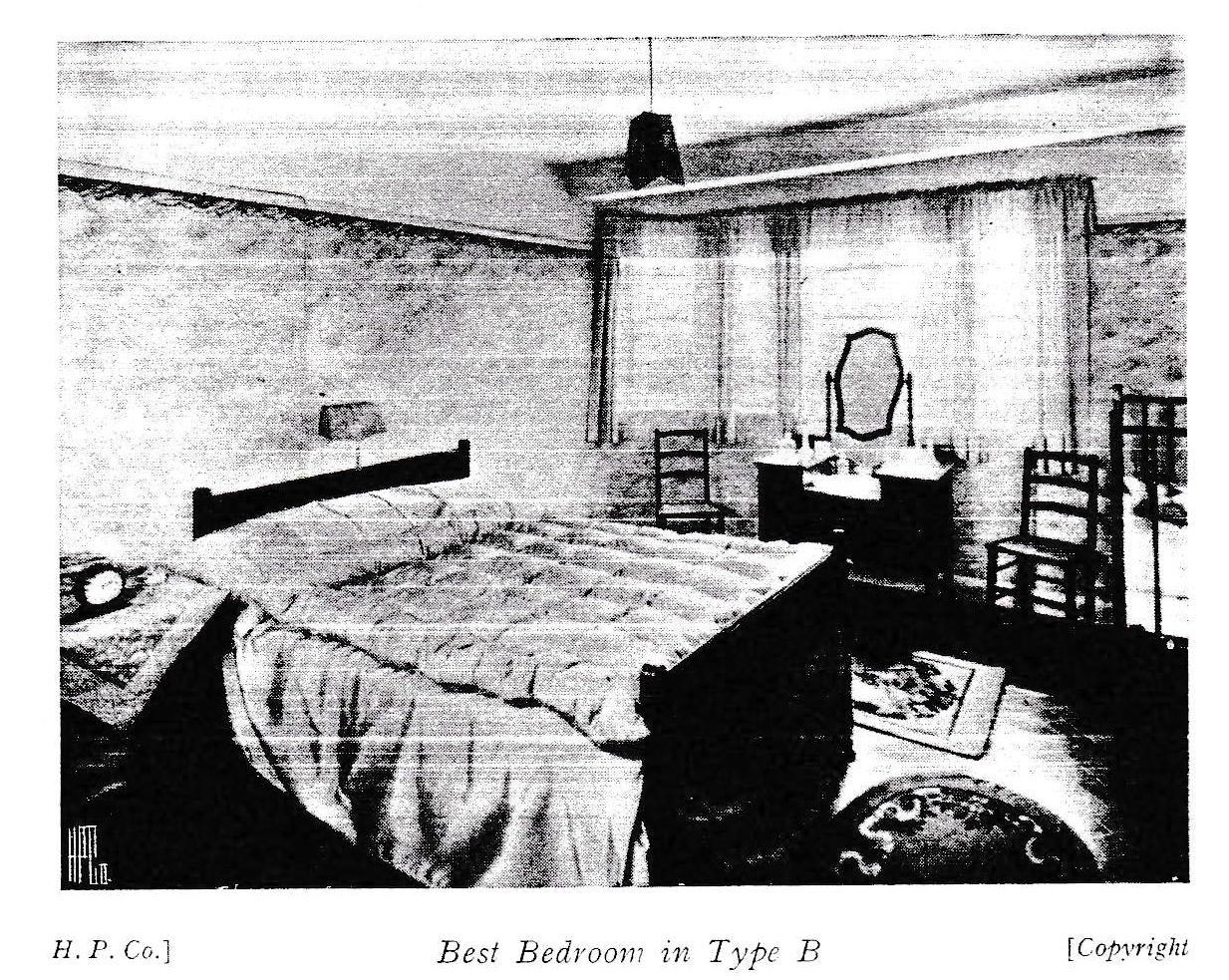 |
 |
| Interior House Type 'B' | Interior House Type 'D' |
Features common to all house types included a garden with a frontage of 25-27ft, and a depth of at least 100ft, which was claimed to be 'exceptional' for a house of this price; well drained soil being a mixture of sand and gravel; and walls of solid bricks, which is assumed to mean without cavities. Garages were not included, although there was claimed to be space to add one if required. The prospectus attached gives details of fitments to be included in kitchens, and bathrooms. All gardens were to be fenced.
The prospectus stresses the local shops available in Farnborough, no doubt more comprehensive than those remaining today, as well as in Orpington, one and a half miles away. Places of worship available in Farnborough are listed, together with transport facilities which included direct links to London via bus route 47 (then going to Shoreditch) and Green Line coach route C to Victoria and Kingston.

Above is an ordnance survey map of the development dated 1938, showing the estate partly mapped out. Click on the image for a google map view of the same location.

This aerial photo shows the estate looking from the west. The A21 is in the foreground with Bassetts Way running left to right through the newly built houses. The engineering works (now long gone) is in the background.
LOCKSBOTTOM
Bassetts
Bassetts is a large house in Starts Hill Road, connecting Farnborough with Locksbottom. The house has an interesting and eventful history. It is listed by the London Borough of Bromley as a building deemed to have architectural interest.Richard Healey, a former resident of Farnborough who now lives in one of the apartments in the original building has researched the history which he writes about below.
This Ordnance Survey map dated 1938 shows the location after the house was built, contrast this with the map in the main panel to the left.

The site where Bassetts House now stands was originally a farm. It was called Starts Hill Farm, and in 1886 it was owned by John Locke Lovibond of the Lovibond Brewing Company, Greenwich. In 1880 -1890 Henry and Caroline Dodd were tenant farmers.
When Bassetts House started to be built in 1911 there were some farm buildings and orchards on the site. The house was built for Arthur Neville Lubbock, nephew of Sir John Lubbock of High Elms. Sir John was a banker and politician, and friend of Charles Darwin who lived in Downe. Arthur Neville Lubbock was born in 1869 and married in 1895 to Alice Ellen Tiarks, one of many daughters of Henry F Tiarks of Foxbury, Chislehurst.
The Lubbocks and the Tiarks were both prominent landowning families at the beginning of the 20th century. Miss Agnes Tiarks, sister of Alice Ellen Lubbock, (née Tiarks) although very old was still living in Chislehurst until fairly recently.
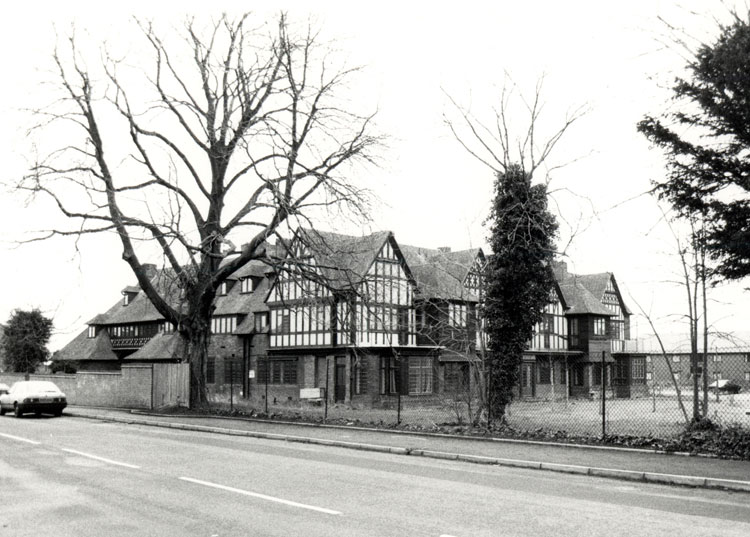
The Lubbocks lived in Bassetts House for 25 years. The motto above the front door, ‘Auctor Pretisa Facit’, means ‘The Author Makes Precious’, or ‘The Giver Makes the Gift Precious’. The architect was mainly Maurice Everett Webb, son of Sir Aston Webb from London. Sir Aston Webb (knighted in 1904) also helped design the Victoria and Albert Museum, Royal Naval College, Dartmouth, Admiralty Arch, Queen Victoria Memorial and the East front of Buckingham Palace.
Bassetts House was built by Higgs and Hill, contractors. In 1933 the Westfield Boys Boarding School transferred from Orpington High Street to Bassetts House and stayed there until war broke out in 1939 at which time the boy’s school was evacuated to Devon. The headmaster was E M Lawford.
In 1939 the building was taken over by Kent County Council for a Nurses Home and as such was used by Farnborough Hospital. The nearby houses in Bassetts Way and Starts Hill were being built at this time.
In 1994 the house became an administration block overseeing a complex of sheltered accommodation houses in the grounds, known as Bassetts Campus.
The house was empty for a number of years, then a Residential Developer, London Square, purchased it for £15 million in 2015. The house has been refurbished on the outside in keeping with its listed status and 13 apartments made internally. The other houses on the 6.3 acre site were demolished and a further 90 properties consisting of one and two bedroom apartments and three and four bedroom houses have been built.



There is a large pond and mature trees in the grounds. Ecologists monitor the crested newts, bats and badgers on the site annually.
Residents of the main house were required to move out in March 2022 following a fire in one of the apartments, which led to extensive damage from water used to extinguish it. Residents were able to move back in in March 2023.
Richard Healey